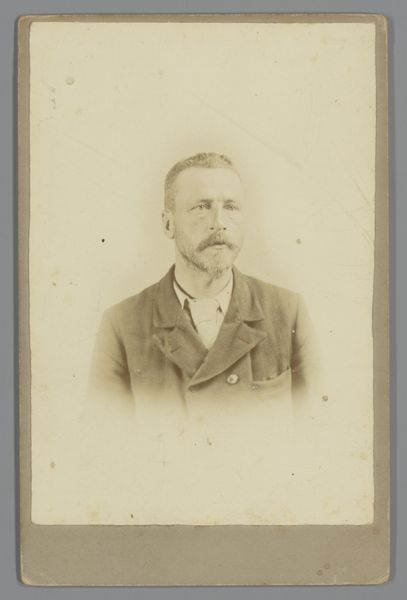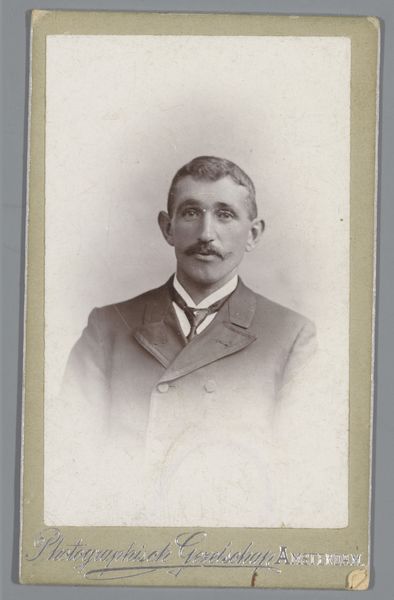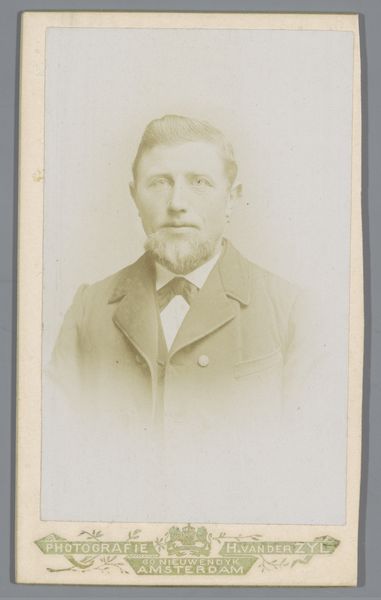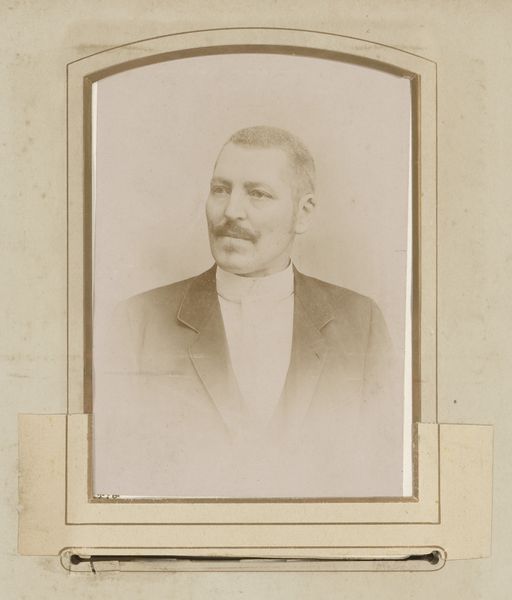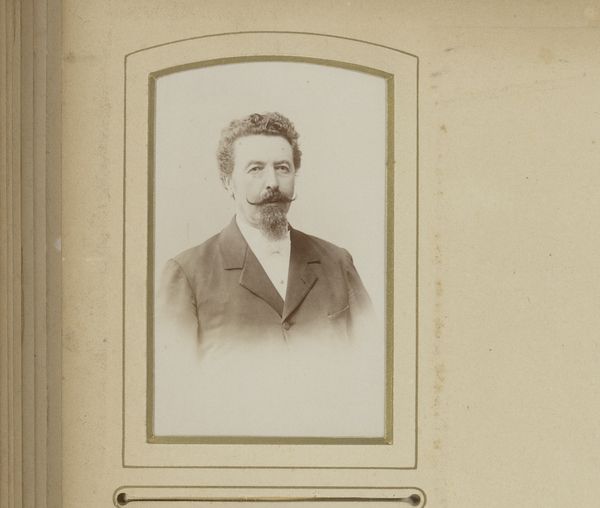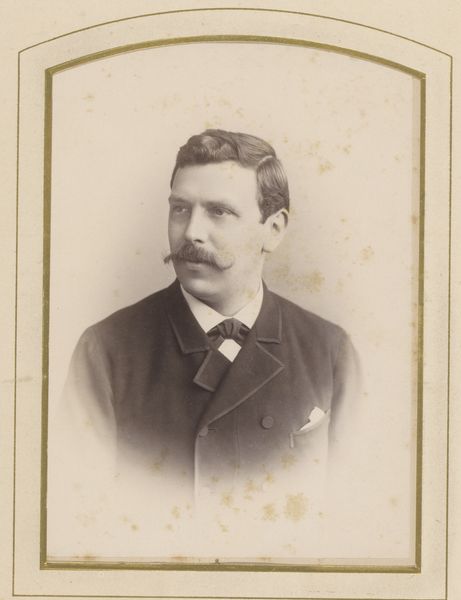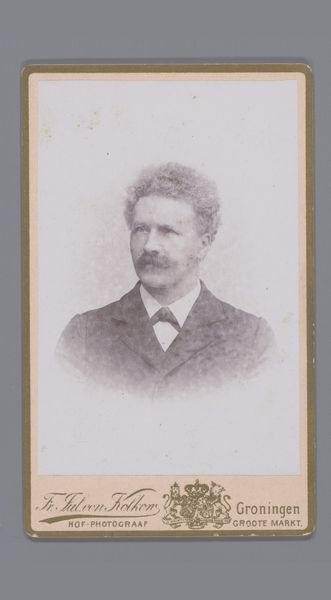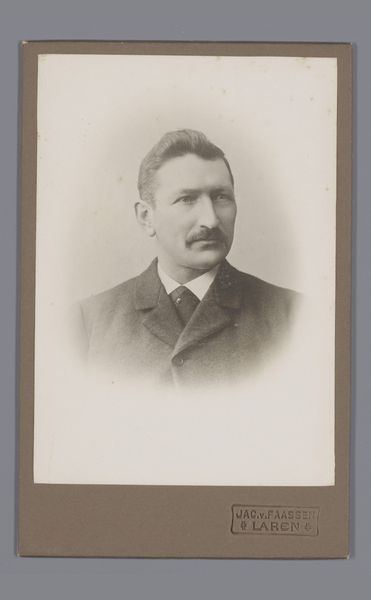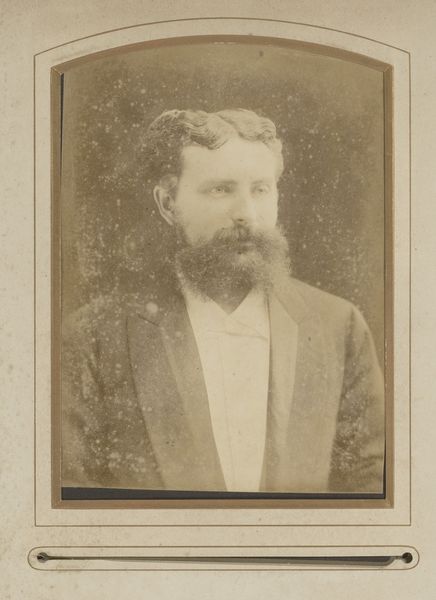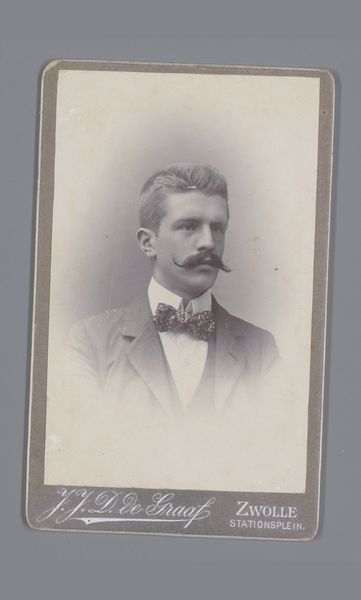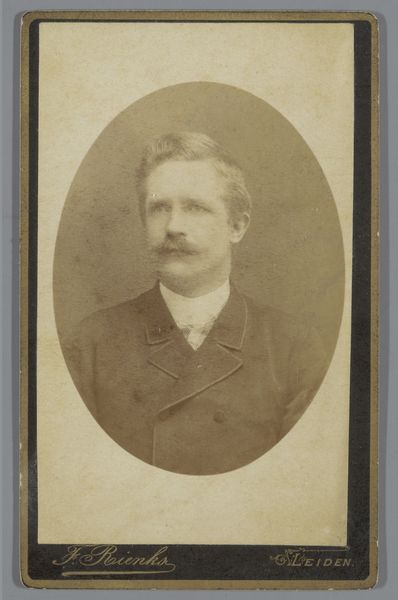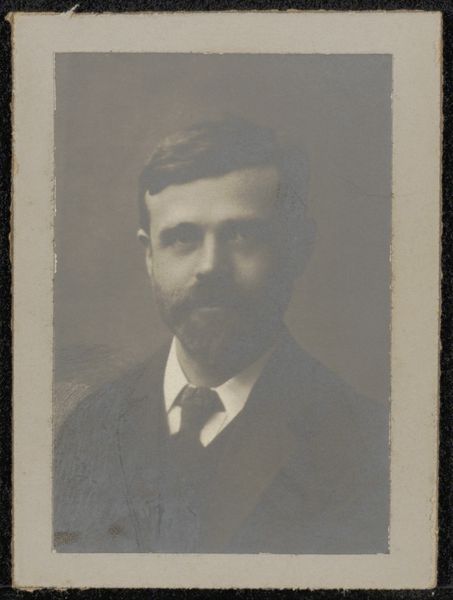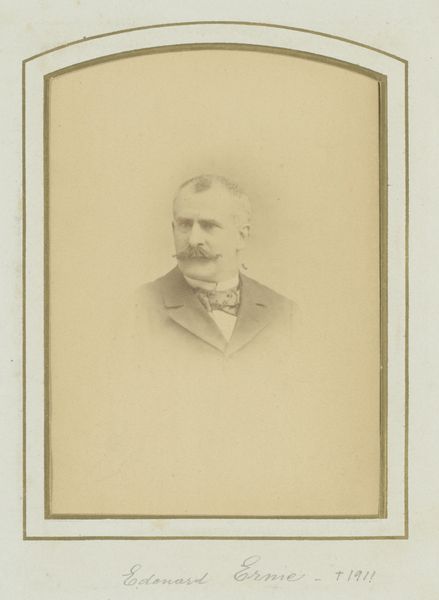
photography, albumen-print
#
portrait
#
photography
#
albumen-print
#
realism
Dimensions: height 133 mm, width 96 mm
Copyright: Rijks Museum: Open Domain
Curator: Here we have an intriguing piece: "Portret van een man," created sometime between 1870 and 1910 by A. & G. Taylor. It’s an albumen print, which gives it that wonderfully warm, sepia tone. Editor: My immediate thought is how this man seems both confident and melancholy. It's there in the downturned corners of his mouth, juxtaposed with his erect posture. Curator: Exactly. The albumen print process, which became commercially widespread in the 1850s, allowed for mass reproduction, altering the distribution and consumption of portraiture and challenging traditional notions of exclusivity associated with painted portraits. Editor: What I find fascinating is who *isn’t* in the photograph. Photography promised access, yes, but access to whom? Were working class people able to access photography at this time? How many non-white faces were captured by artists in the 1870s? Curator: That’s a key point. The sitter’s attire speaks to a certain middle class status, reflective of the era. Consider the social role of photographic studios during this time. The carte-de-visite, a small portrait card, really took off. People would exchange them, collect them—a whole culture emerged around photographic portraiture that reinforced certain class dynamics and social standing. Editor: Right, but that culture also created new opportunities for representing oneself. Who had control over how the portraits were produced and disseminated? This portrait suggests not just documentation, but active self-presentation. That's what I mean about his 'confidence'. I imagine there must have been very clear sartorial rules and customs around portraiture at that time. Curator: And the details are crucial: his carefully groomed moustache, his tie, the cut of his suit, these all telegraph messages about his identity and aspirations within his specific socio-economic context. Also consider the institutional apparatus that helped facilitate the proliferation of photography: scientific societies, art academies, world exhibitions... Editor: Thinking about this piece reminds me how critical it is that galleries work hard to challenge those old hegemonies in its acquisitions, shows, and curation practice. Curator: It's vital. Examining images like this lets us to better understand photography's history of reinforcing social and political structures and class identities. Editor: Yes, and reflecting on where we are now allows us to build more just art spaces.
Comments
No comments
Be the first to comment and join the conversation on the ultimate creative platform.
